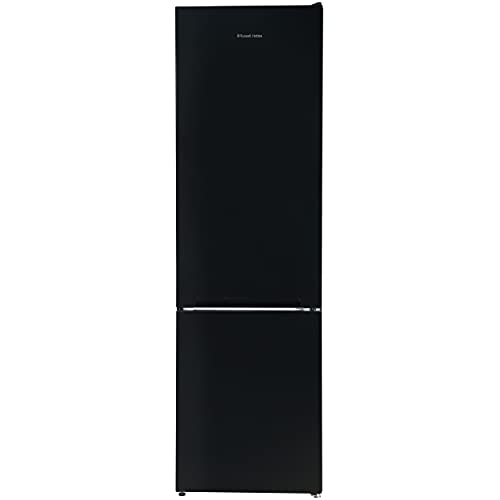
Large Fridge Freezers Uk
Add a review FollowOverview
-
Founded Date April 3, 1988
-
Sectors AHP
-
Posted Jobs 0
-
Viewed 7
Company Description
The No. 1 Question Everybody Working In Fridge UK Must Know How To Answer

The Comprehensive Guide to Refrigerators in the UK
Refrigerators are an important device in every home, serving a crucial function in food preservation and safety. The UK market provides a diverse range of fridge types, sizes, features, and brands. This post aims to offer an in-depth understanding of fridges readily available in the UK, including their functions, energy performance, and aspects to consider when purchasing.
Types of Refrigerators Available in the UK
When searching for a refrigerator, it is very important to comprehend the numerous types readily available. Each type comes with its own set of functions and functions, dealing with different needs and choices. The most common kinds of refrigerators discovered in the UK include:

1. Leading Freezer Refrigerators
- Description: The standard style, featuring the freezer compartment on top.
- Pros: More inexpensive, large, easy access to fresh food.
- Cons: Limited freezer area, the top might be less practical for bulk items.
2. Bottom Freezer Refrigerators
- Description: Freezer lies at the bottom, allowing simpler access to fresh food.
- Pros: Greater benefit, much better visibility of fresh items.
- Cons: Usually more costly, some might battle with big frozen products.
3. Side-by-Side Refrigerators
- Description: Features 2 vertical compartments, one for the fridge and one for the freezer.
- Pros: Ample storage area, simple to access both frozen and fresh foods.
- Cons: Wider footprint, they may not fit in smaller kitchens.
4. French Door Refrigerators
- Description: Combines features of bottom freezers and side-by-sides, with 2 doors for the fridge on top.
- Pros: Stylish design, roomy, and often includes sophisticated features.
- Cons: Higher price point, aligns badly with smaller sized cooking area designs.
5. Compact Refrigerators
- Description: Smaller models developed for minimal areas.
- Pros: Ideal for small houses or workplaces, energy-efficient.
- Cons: Limited storage capacity, may do not have functions.
6. Integrated Refrigerators
- Description: Designed to blend seamlessly with cooking area cabinets.
- Pros: Custom fit, visual appeal, increases home worth.
- Cons: Higher cost, might offer less flexibility in placement.
7. Smart Refrigerators
- Description: Equipped with Wi-Fi and clever innovation features.
- Pros: Advanced includes like touch screens and internal cams.
- Cons: Expensive, more complicated to fix.
| Refrigerator Type | Accessibility | Average Price Range | Energy Efficiency |
|---|---|---|---|
| Top Freezer | Moderate | ₤ 300 – ₤ 600 | Typical |
| Bottom Freezer | High | ₤ 400 – ₤ 800 | Above Average |
| Side-by-Side | Easy | ₤ 800 – ₤ 1500 | Varies |
| French Door | High | ₤ 800 – ₤ 2000 | High |
| Compact | Restricted | ₤ 200 – ₤ 500 | Average |
| Integrated | Custom | ₤ 1000 – ₤ 2500 | High |
| Smart | Variable | ₤ 1200+ | High |
Key Features to Consider
- Energy Efficiency: Look for designs that are energy-efficient. In the UK, devices are ranked from A (most efficient) to G (least efficient). An A+ rating and above can result in considerable energy savings.
- Capability: Choose a Fridge freezer in uk (Www.richiepotts.top) with enough capability for your home. A standard guideline is 100-200 liters per individual.
- Sound Level: Consider models that run silently, specifically if the cooking area is near living spaces.
- Cooling Technology: Features like frost-free technology deserve the financial investment, as they lessen upkeep.
- Adjustable Shelves: Having adjustable racks boosts the versatility to keep larger products.
- Temperature level Control: Check for easy-to-use temperature level controls and zones for different types of food.
- Design: Choose the style and color that matches your kitchen aesthetic, whether you prefer a modern stainless-steel appearance or a timeless retro finish.
Buying Tips
- Identify Your Needs: Consider your cooking practices, household size, and kitchen area space.
- Set a Budget: Refrigerators can be found in numerous price varieties. Develop a budget before you start going shopping.
- Research Energy Ratings: Invest in energy-efficient models to conserve on energy costs.
- Check out Reviews: User experiences can provide insights into dependability and performance.
- Compare Brands: Some brand names are known for their toughness while others might offer more innovative functions.
Frequently Asked Questions (FAQs)
1. How long do refrigerators generally last?
- Refrigerators typically last in between 10 to 20 years, depending on the brand name and how well they are preserved.
2. Are there any upkeep pointers for prolonging the life of a refrigerator?
- Regularly clean the coils, inspect the door seals, and occasionally defrost if needed to keep optimum performance.
3. What is the best size refrigerator for a family of 4?
- For a household of 4, a refrigerator with a capability of around 400-600 liters is generally adequate.
4. Do I need to fret about energy consumption when buying a refrigerator?
- Yes, energy usage is essential. Search for units with high energy performance scores to lower monthly costs.
5. Should I choose a fridge with a water and ice dispenser?
- This feature can be hassle-free, especially for families. Nevertheless, it might need more upkeep than standard designs.
Getting a refrigerator is a considerable choice for any household in the UK. With numerous types readily available, each with its special functions and benefits, it is important to assess individual needs before deciding. By thinking about aspects such as energy effectiveness, capability, and design looks, consumers can select a fridge that lines up well with their way of life, ultimately improving their kitchen area experience while safeguarding food quality and freshness.







